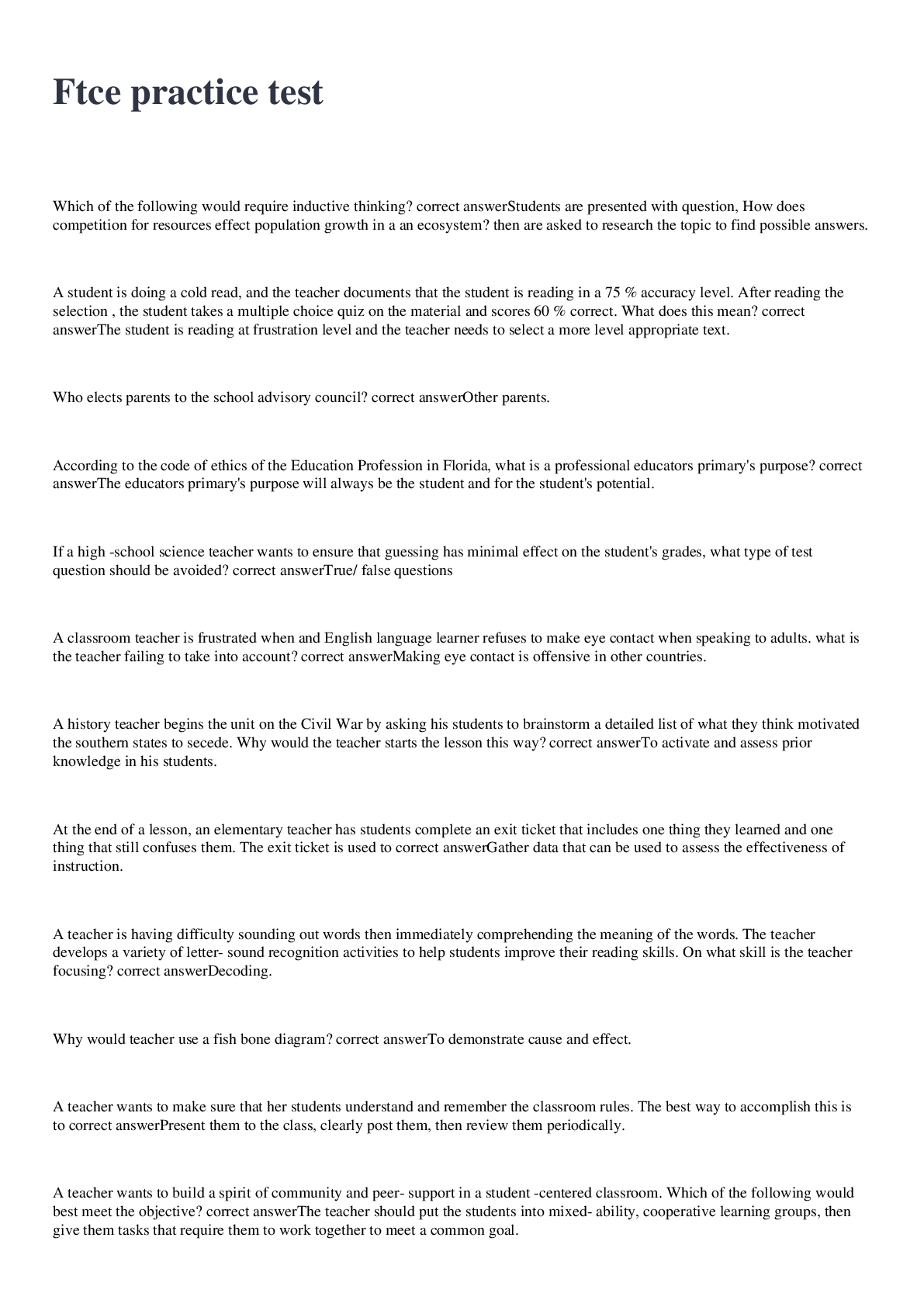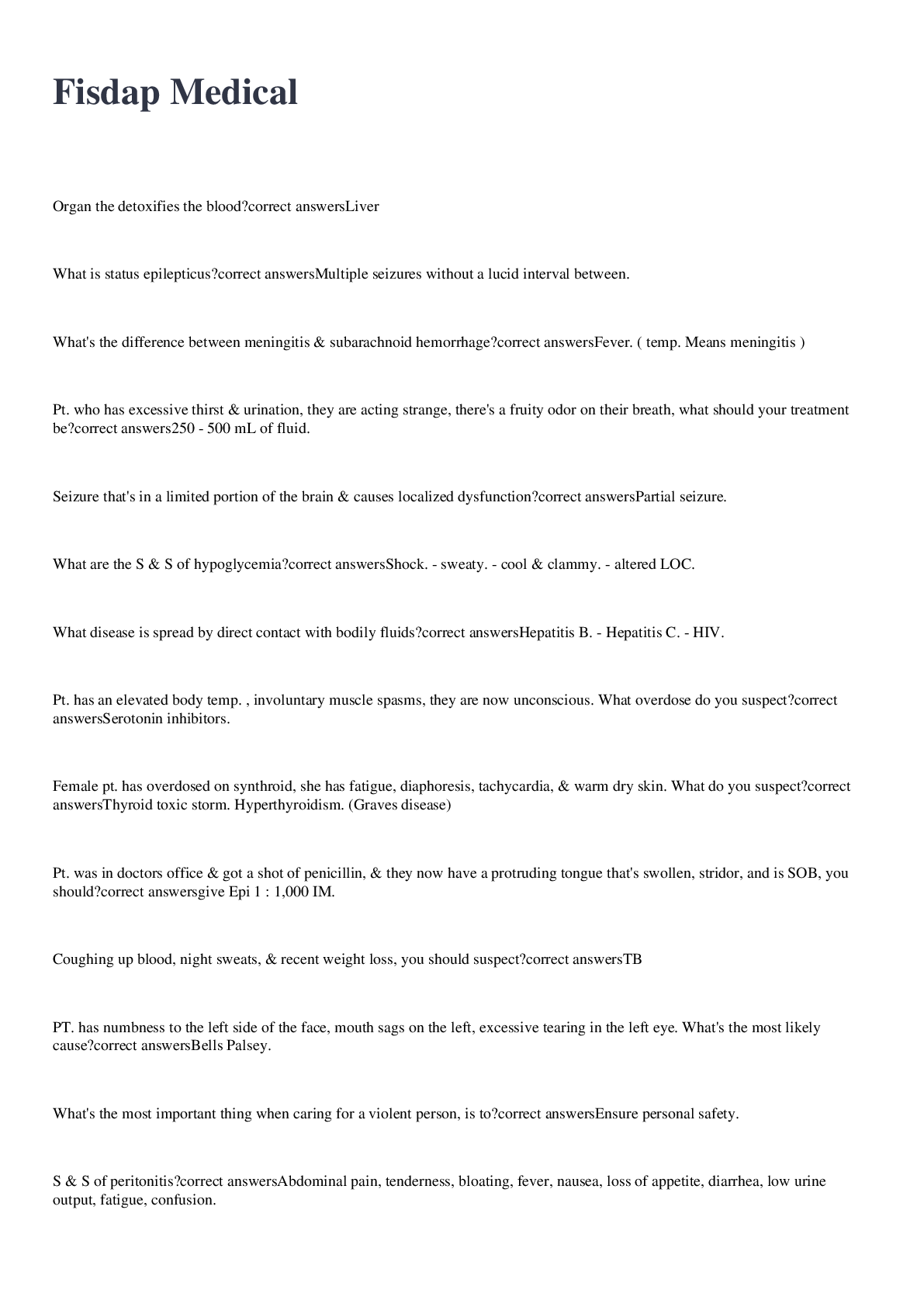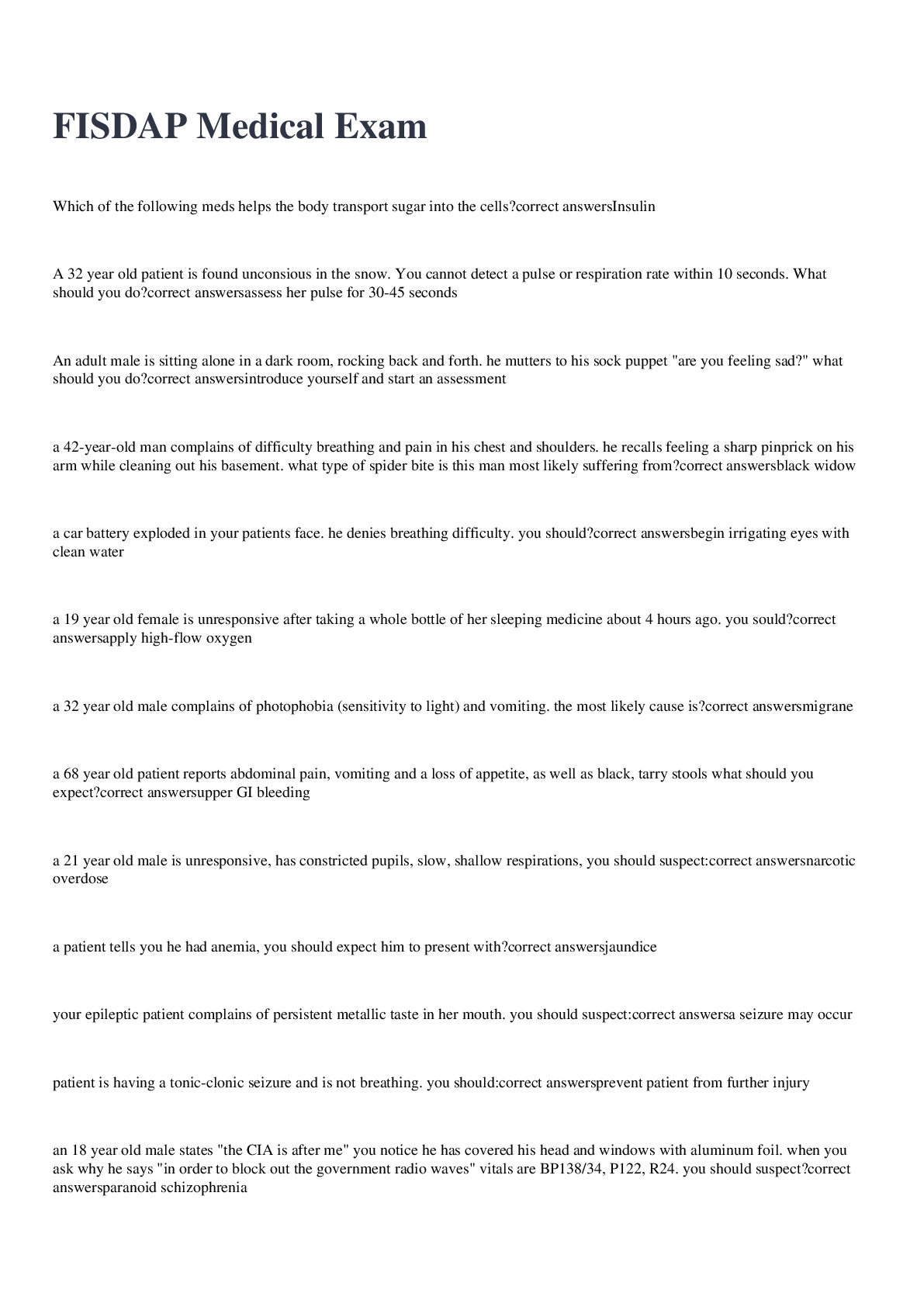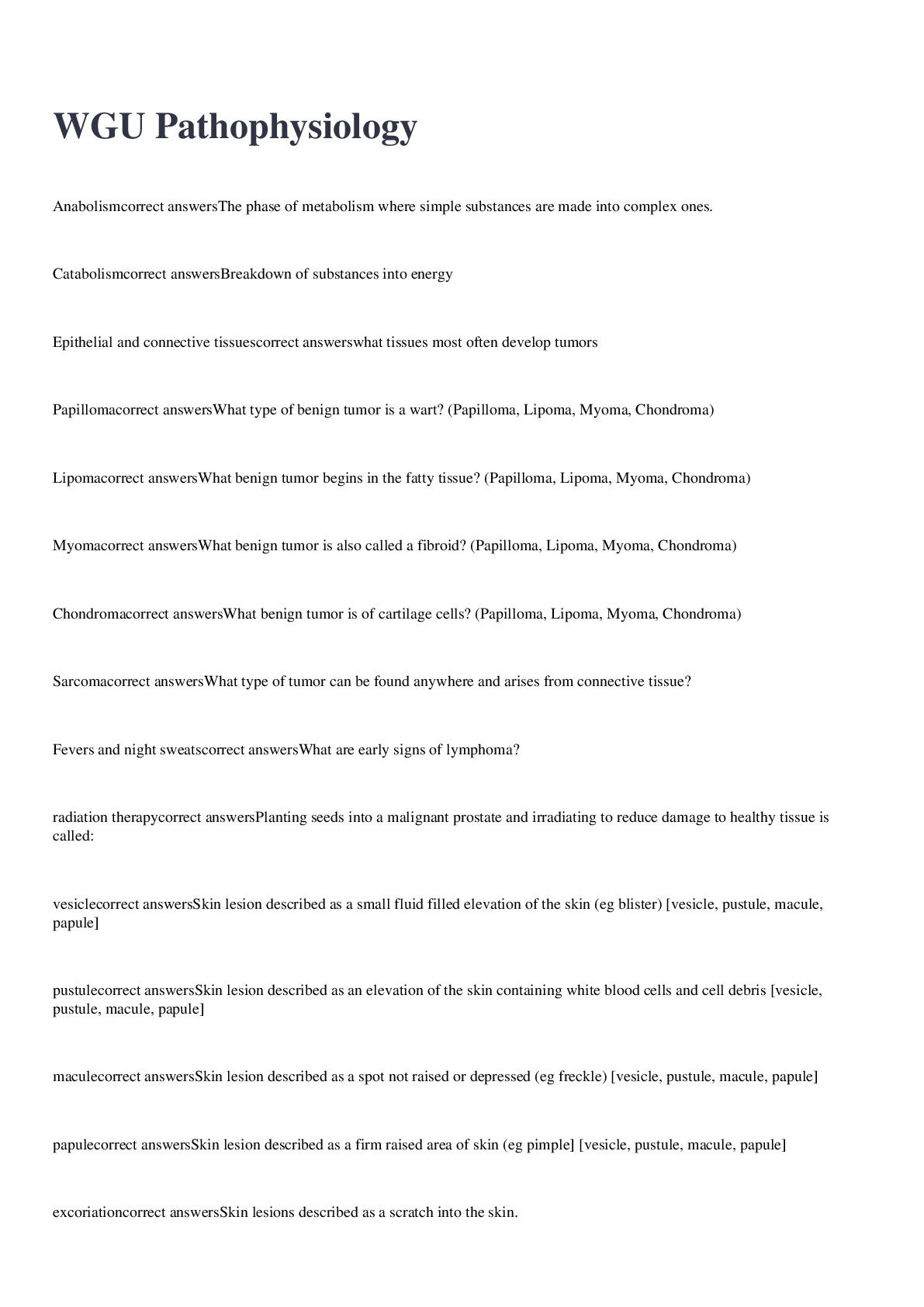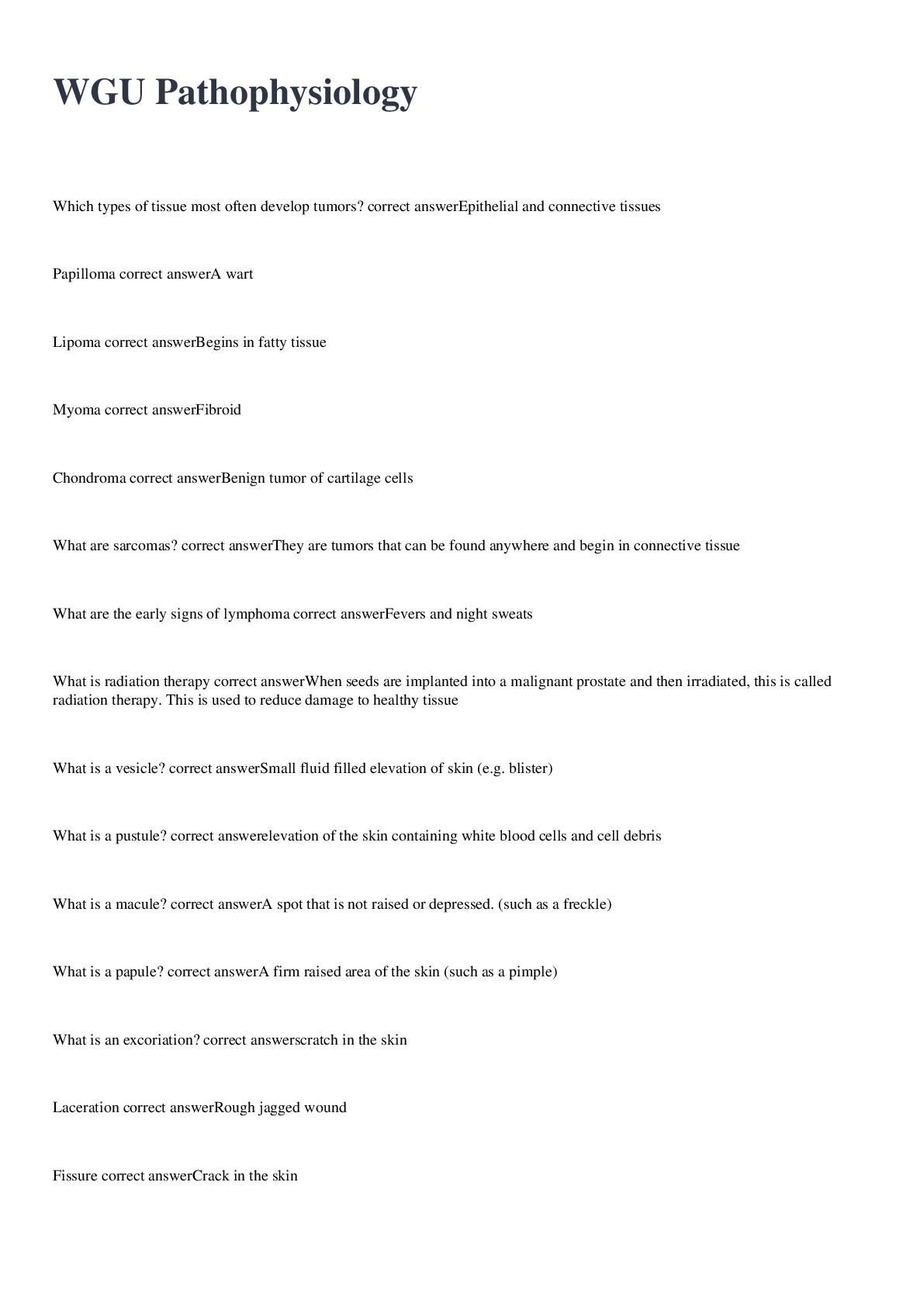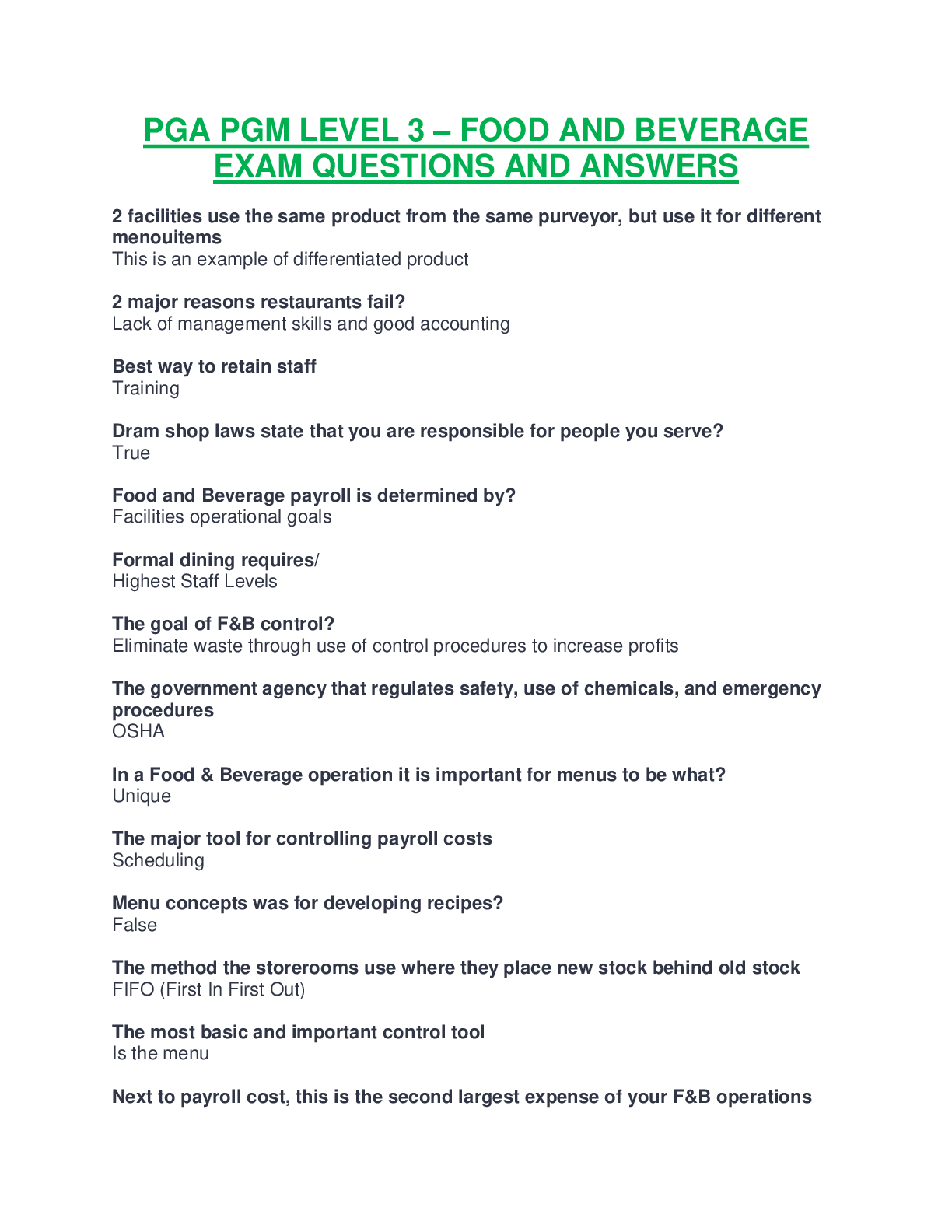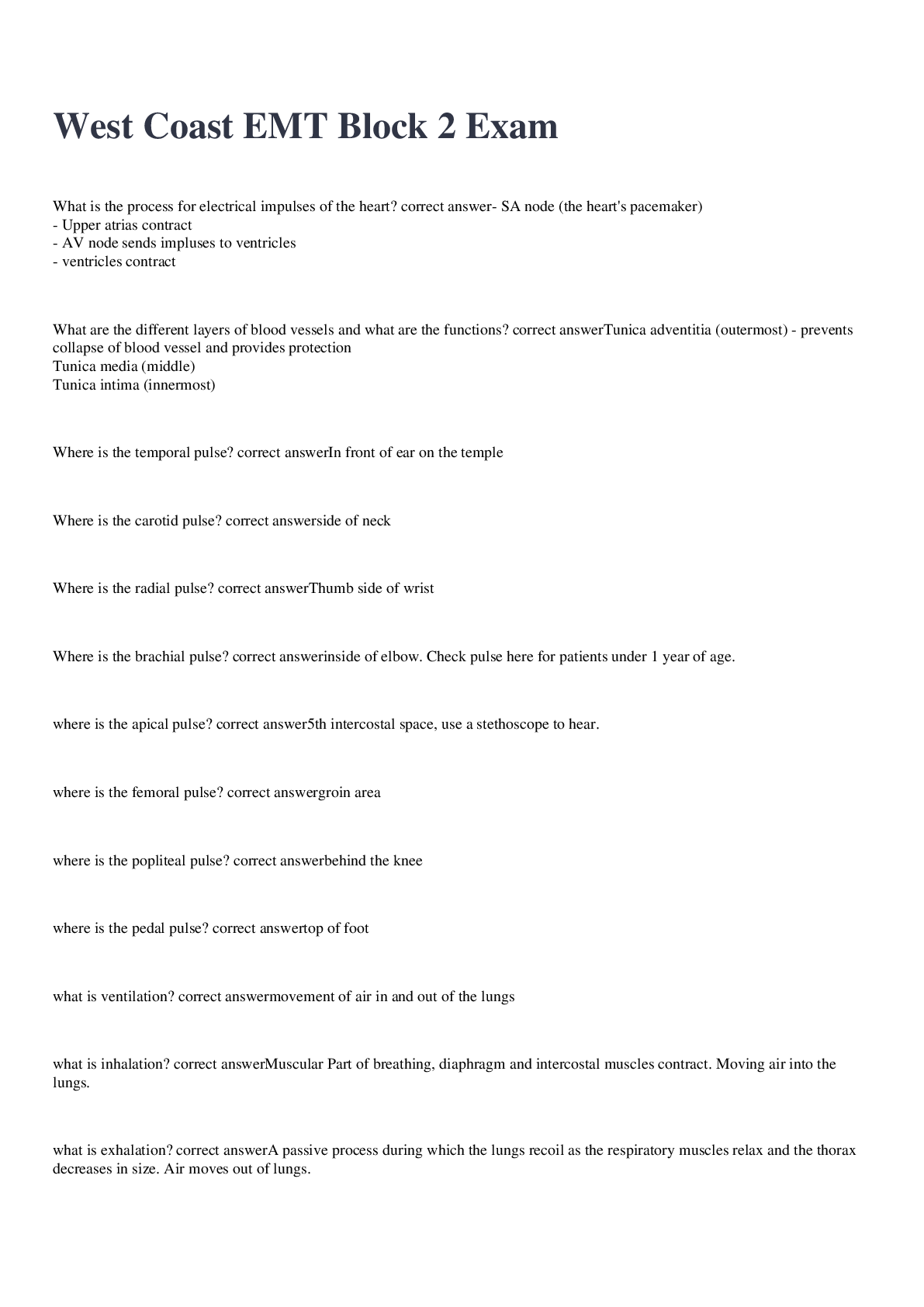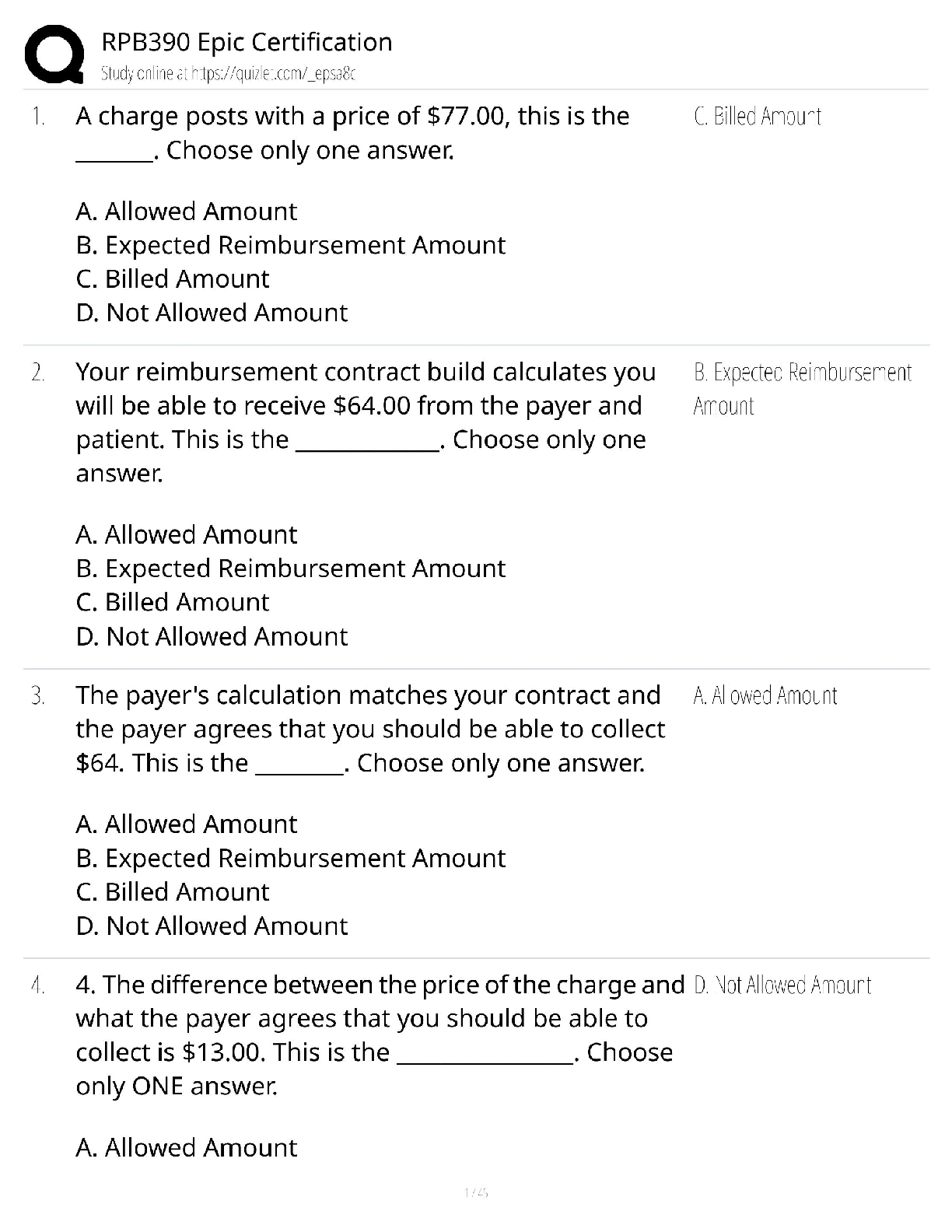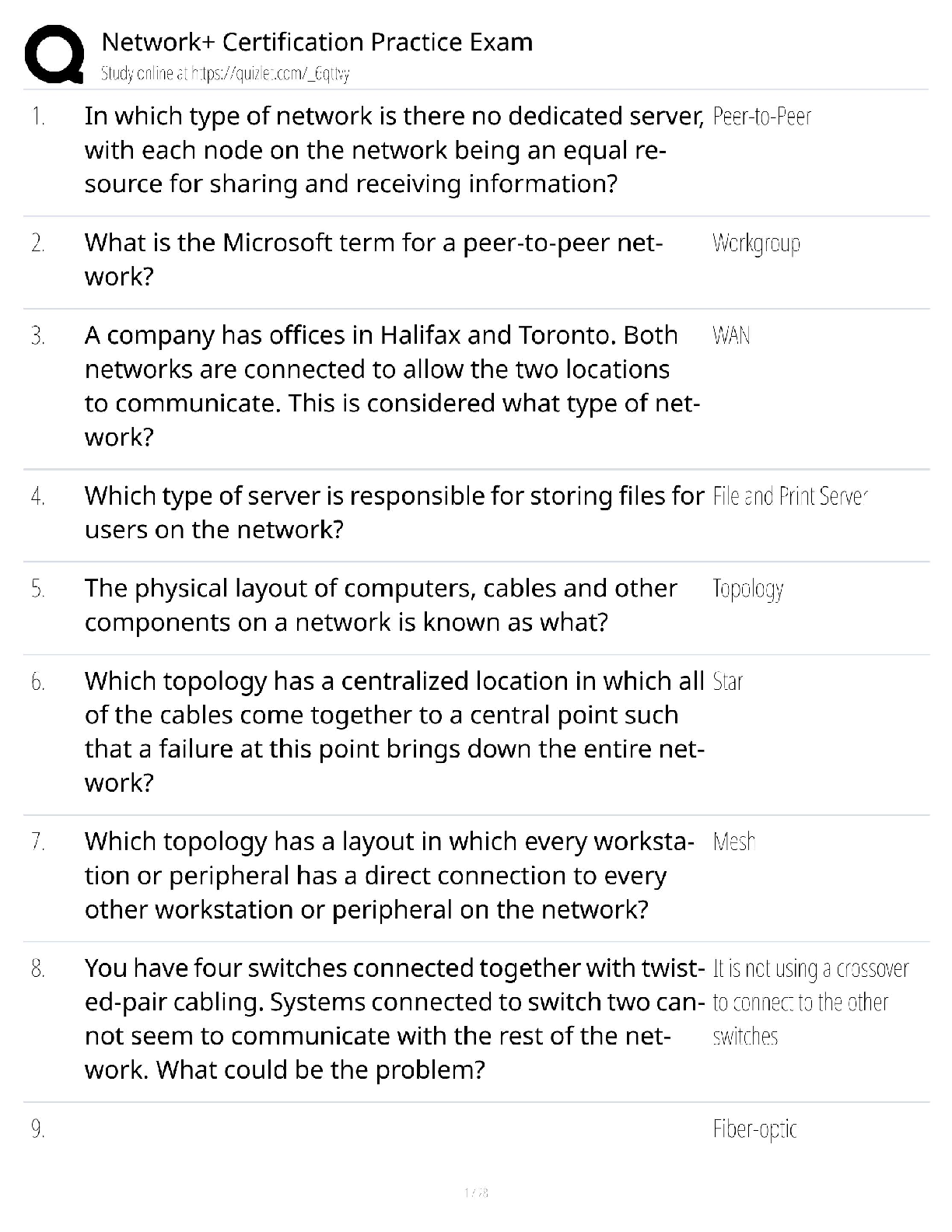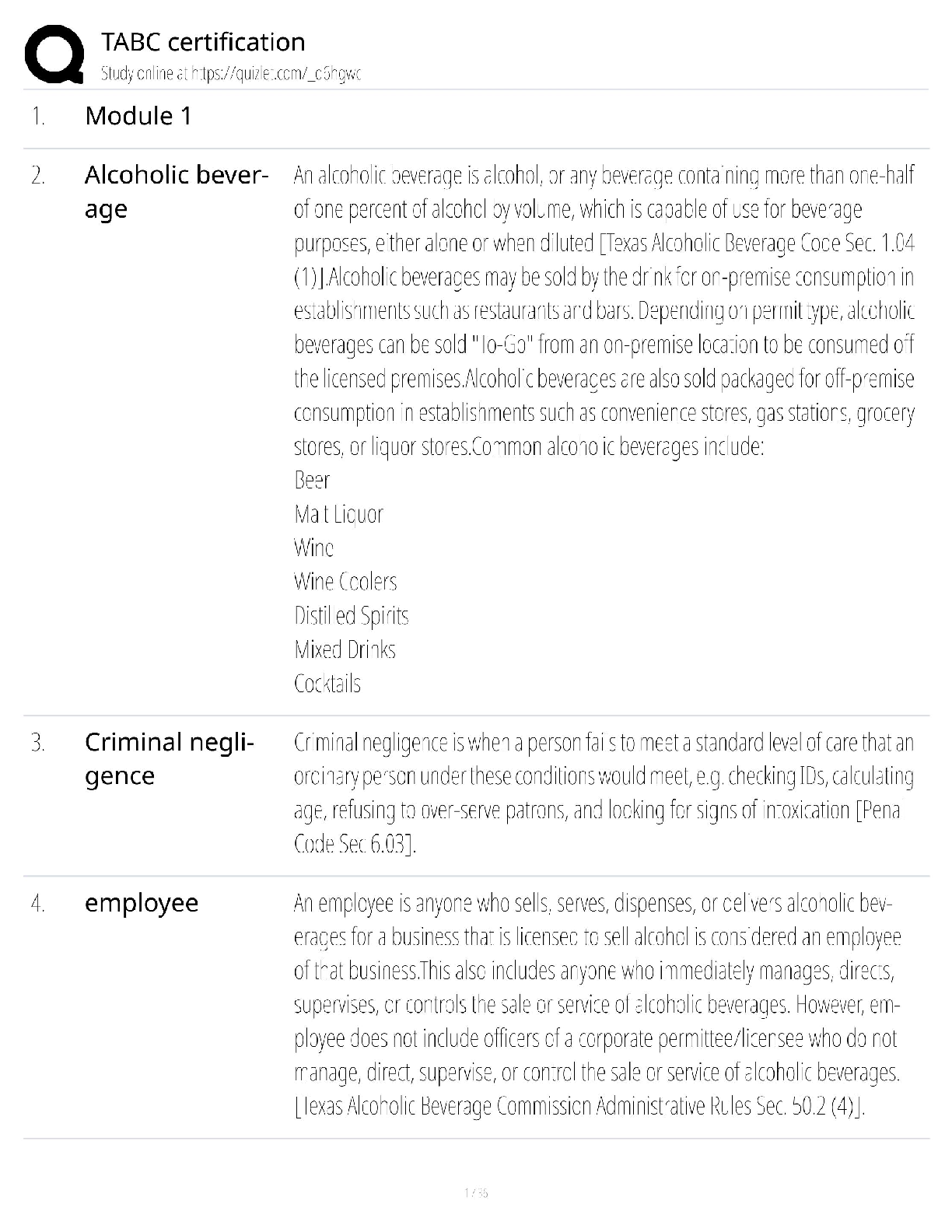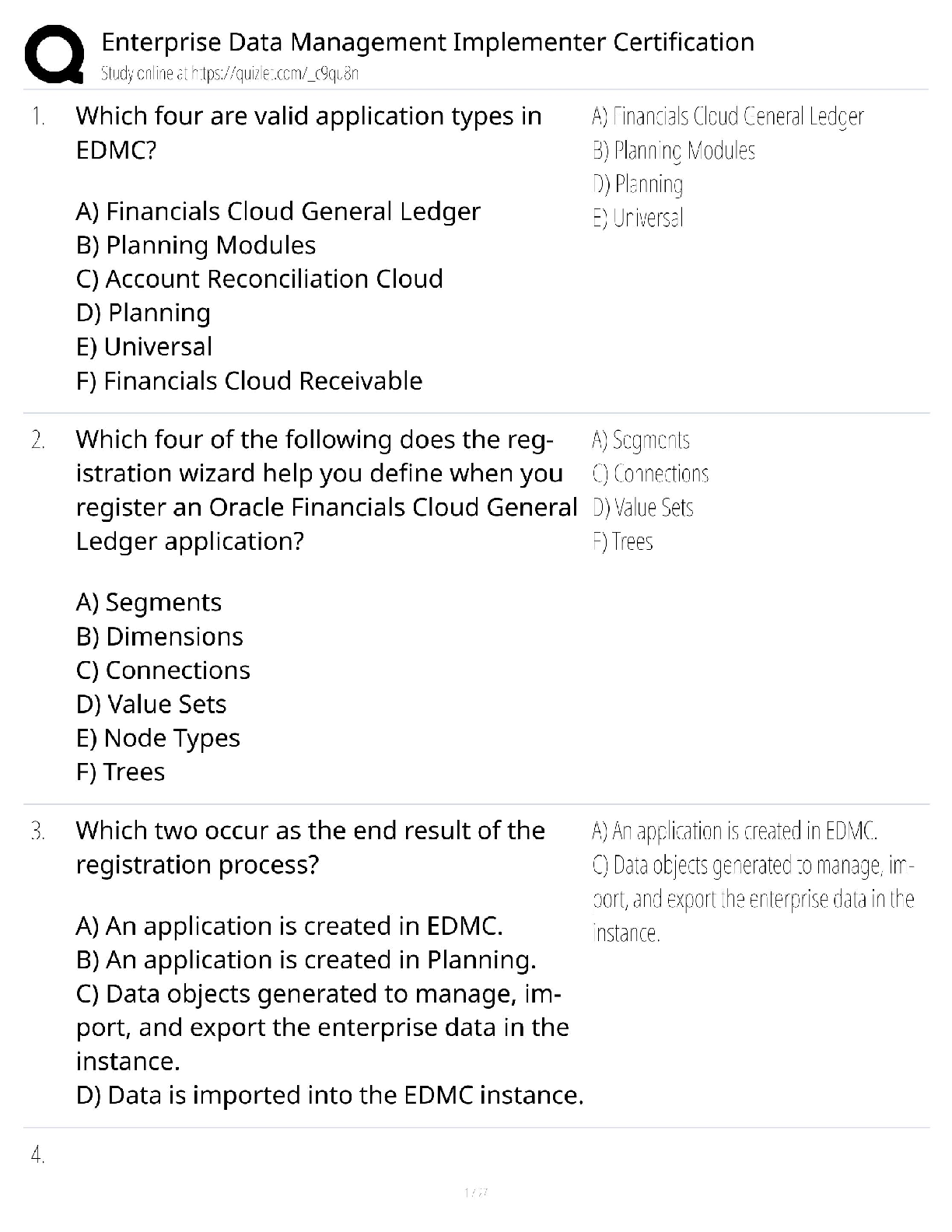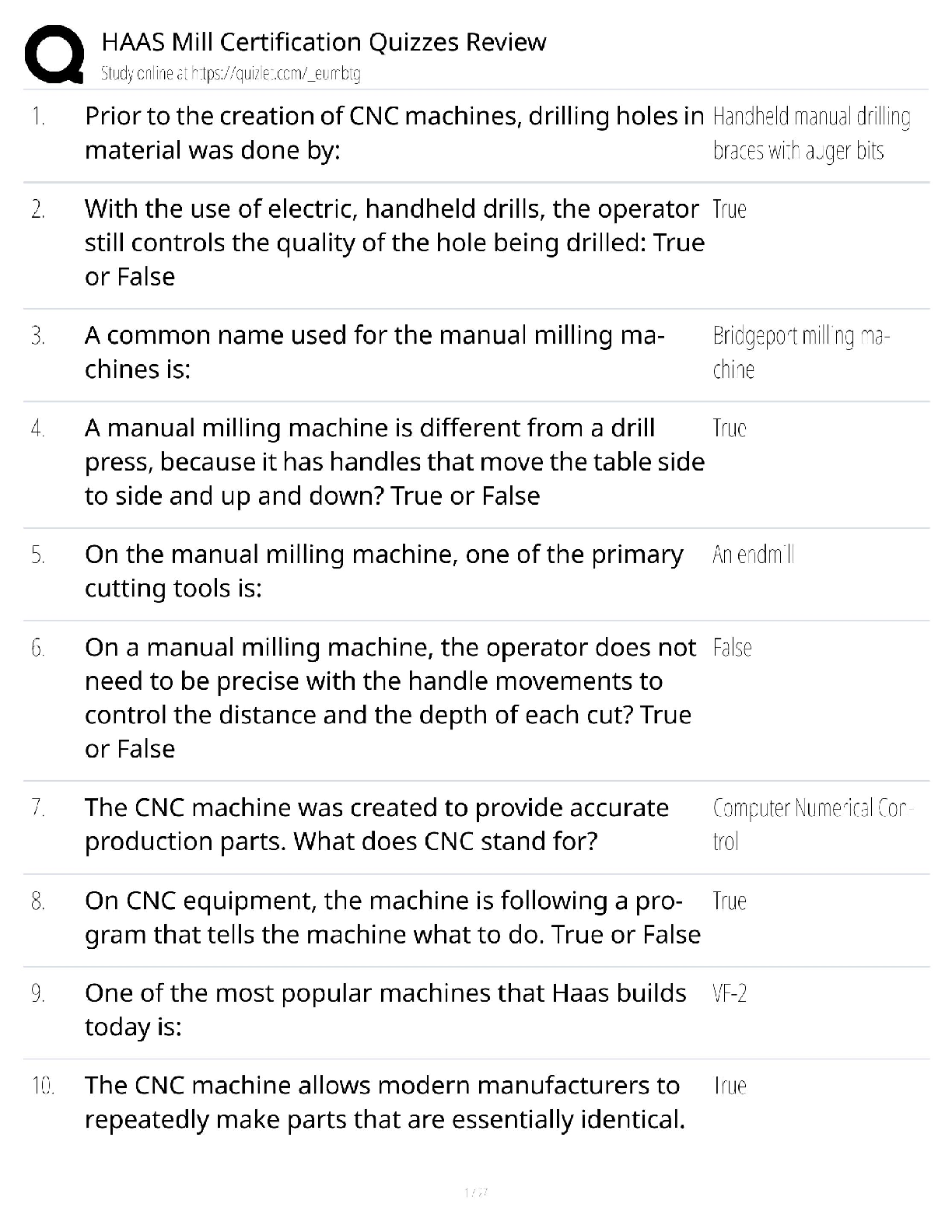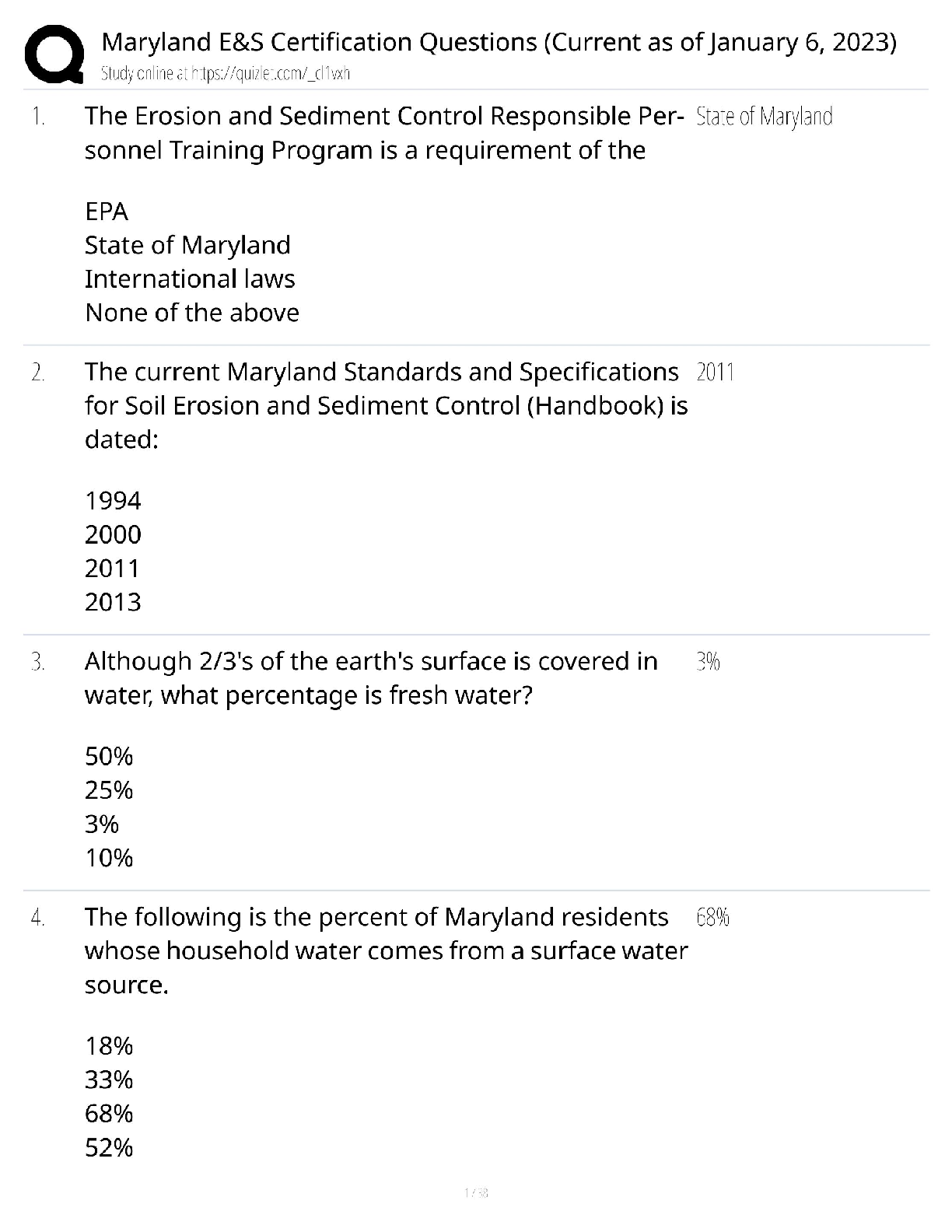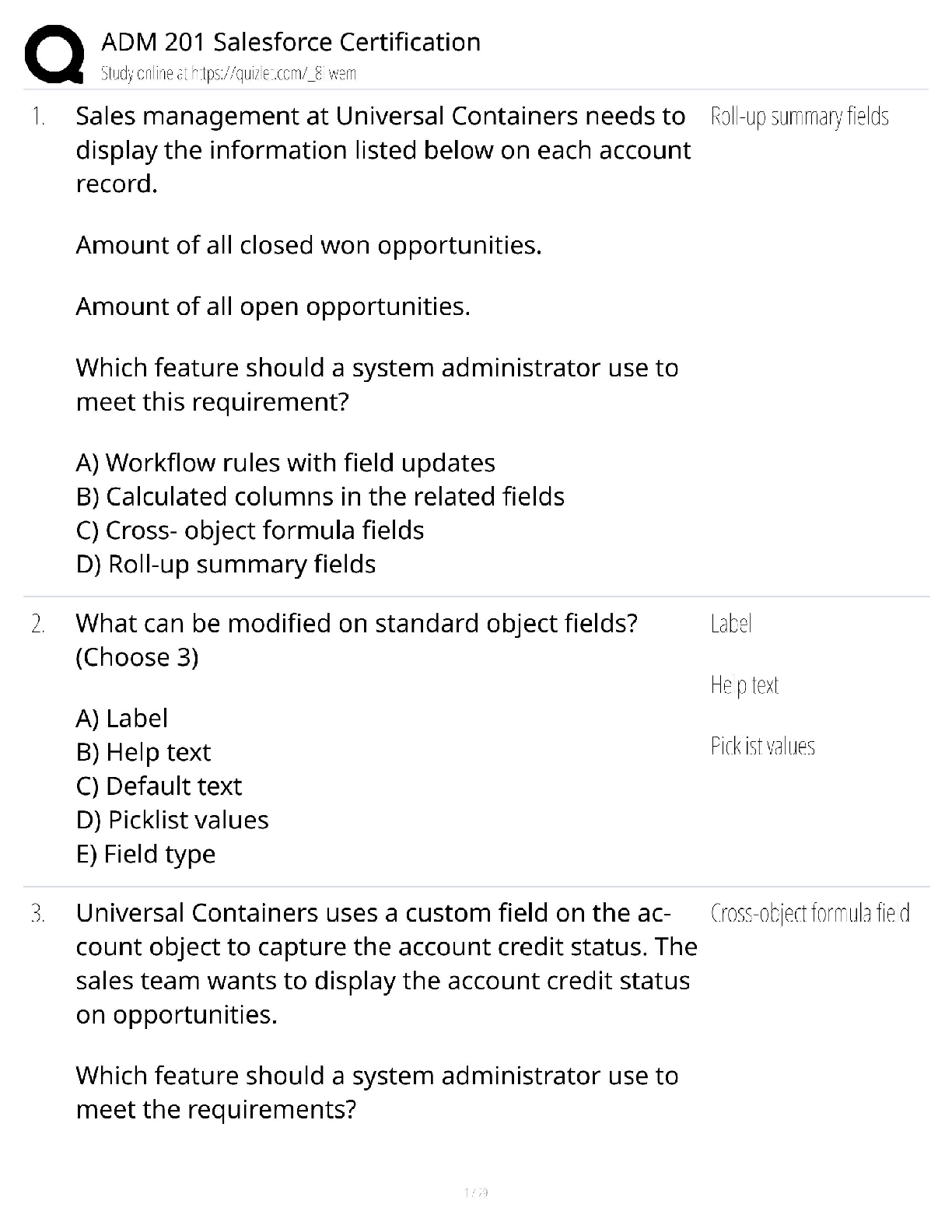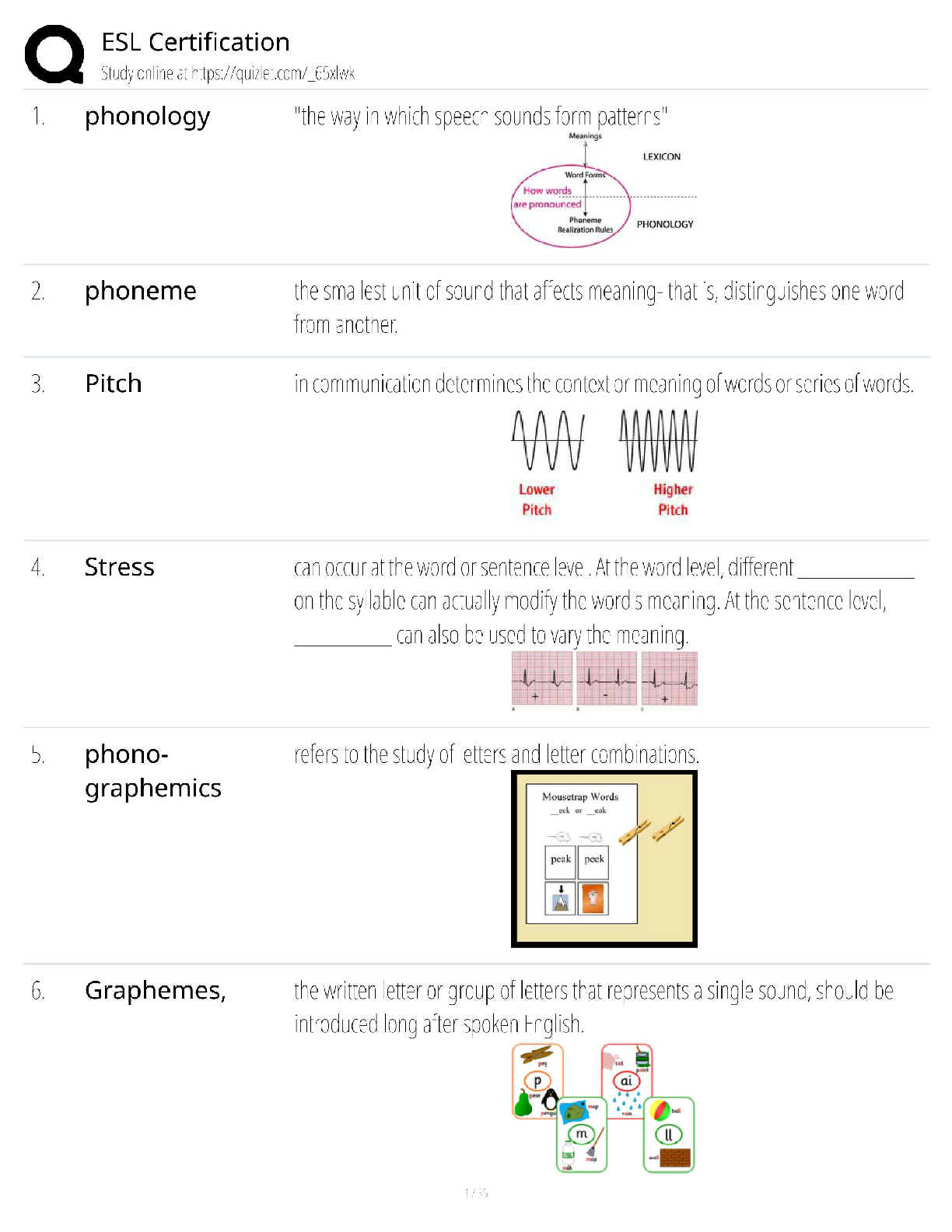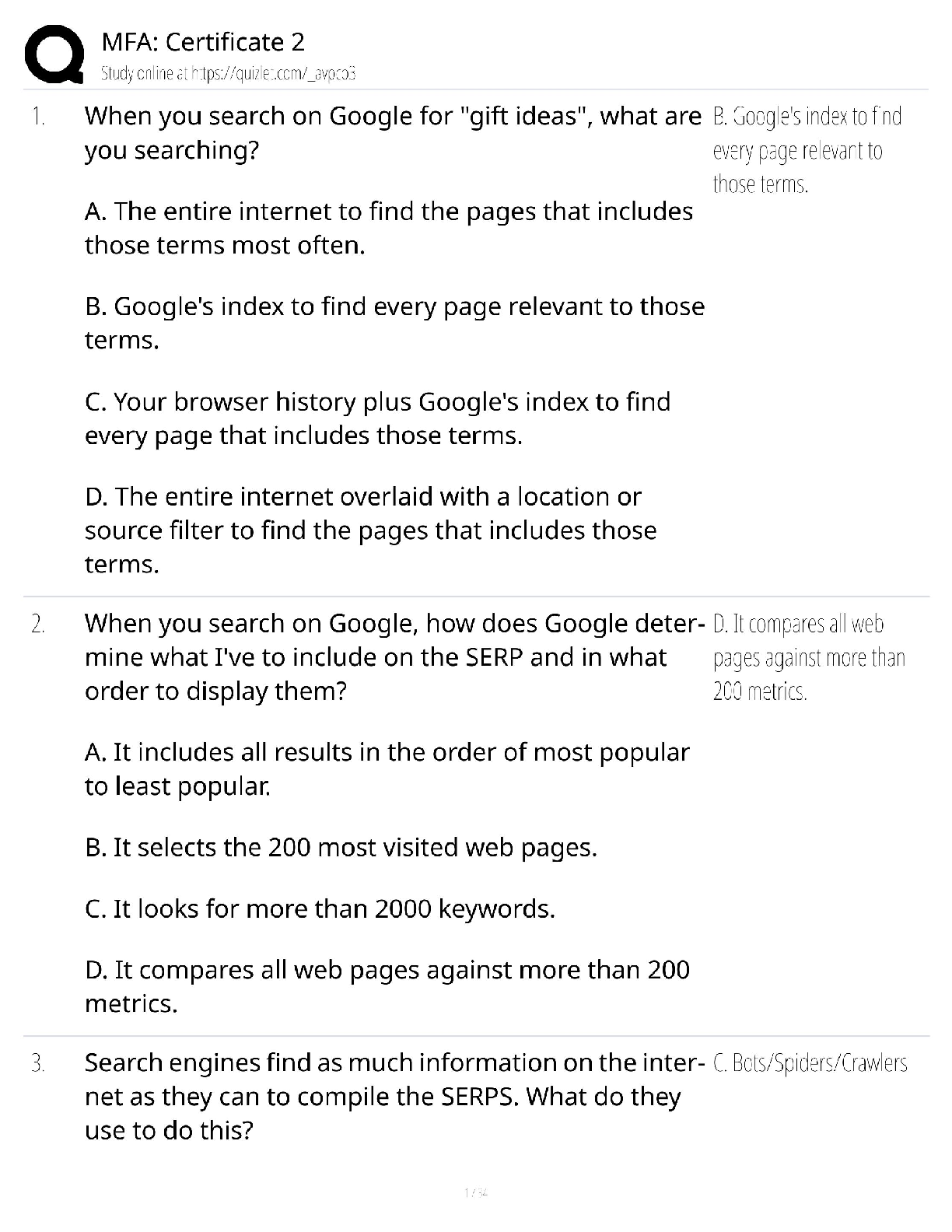Health Care > QUESTIONS & ANSWERS > PALS post test2022/2023 with all correct solutions (All)
PALS post test2022/2023 with all correct solutions
Document Content and Description Below
10 seconds - answerA 6 month old infant is unresponsive. You begin checking for breathing at the same time you check for the infants pulse. Which is the maximum time you should spend when trying to si ... multaneously check for breathing and palpate the infants pulse before starting CPR? Disordered Control of Breathing - answerA 4 year old child is brought to the emergency department for seizures. The seizures stopped a few minutes ago, but the child continues to have slow and irregular respirations. Which condition is most consistent with your assessment? blood glucose - answerAn 8 year old child is brought to the emergency department with a 2 day history of lethargy and polyuria. The child has new onset rapid, deep, and labored breathing. Which diagnostic test should you order first? Reposition the patient, and insert an oral airway - answerAfter rectal administration of diazepam, an 8 year old boy with a history of seizures is no unresponsive to painful stimuli. His respirations are shallow, at a rate of 10/min. His Oxygen saturation is 94% on 2L of NC oxygen. On examination, the child is snoring with poor chest rise and poor air entry bilaterally. What action should you take next? Provide bag mask ventilation - answerAfter rectal administration of diazepam, an 8 year old boy with a history of seizures is no unresponsive to painful stimuli. His respirations are shallow, at a rate of 10/min. His Oxygen saturation is 94% on 2L of NC oxygen. On examination, the child is snoring with poor chest rise and poor air entry bilaterally. After repositioning the patient and you insert an Oral airway, the patient continues to deteriorate. What next step is the most appropriate? 15:2 - answerA 6 year old child is found unresponsive, not breathing, and without a pulse. one health care worker leaves to activate the emergency response system and get the resuscitation equipment. You and another healthcare provider immediatly begin CPR. Which compression to ventilation ratio do you use? 94%-99% - answerIn post resuscitation management after cardiac arrest, extra care should be taken to avoid repercussion injury. what should the ideal oxygen saturation range most likely be? "resume compressions" - answerA 3 year old child is in cardiac arrest, and high quality CPR is in progress. You are the team leader. The first rhythm check reveals the rhythm shown here. Defibrillation is attempted with a shock dose of 2 J/kg. after administration of the shock, what should you say to you team members? 2-4 J/kg - answerA 4 year old child in cardiac arrest is brought to the emergency department by ambulance. High quality CPR is being performed. The cardiac monitor displays the rhythm strip shown here. The estimated weight of the child is 20 kg. What dose range should you use for the initial defibrillation? 40 Joules - answerA 4 year old child in cardiac arrest is brought to the emergency department by ambulance. High quality CPR is being performed. The cardiac monitor displays the rhythm strip shown here. The estimated weight of the child is 20 kg. As the team leader, how many joules do you tell your team member to use to perform initial Defib? Allowing complete chest wall recoil after each compression - answerYou are the team leader during a pediatric resuscitation attempt. which action is an element of high quality CPR? blood pressure - answerYou are caring for a 3 month old boy with a 2 day history of fever, vomiting and diarrhea. His parents state that he has been sleeping much more. His HR is 190/min, temp is 38.3 degrees C (101 F) blood pressure is 59/29 mmHg, Resp rate is 70/min and shallow, and oxygen sat is 94% on 100% oxygen. His capillary refills time is 4-5 seconds, and he has mottled, cool extremities. The infant weighs 6 Kg. Which assessment finding indicates that the infant is in hypotensive shock? hypovolemic shock - answerYou are caring for a 3 month old boy with a 2 day history of fever, vomiting and diarrhea. His parents state that he has been sleeping much more. His HR is 190/min, temp is 38.3 degrees C (101 F) blood pressure is 59/29 mmHg, Resp rate is 70/min and shallow, and oxygen sat is 94% on 100% oxygen. His capillary refills time is 4-5 seconds, and he has mottled, cool extremities. The infant weighs 6 Kg. On the basis of this infants presentation, which type of shock does this infant have? 20 ml/kg normal saline - answerYou are caring for a 3 month old boy with a 2 day history of fever, vomiting and diarrhea. His parents state that he has been sleeping much more. His HR is 190/min, temp is 38.3 degrees C (101 F) blood pressure is 59/29 mmHg, Resp rate is 70/min and shallow, and oxygen sat is 94% on 100% oxygen. His capillary refills time is 4-5 seconds, and he has mottled, cool extremities. The infant weighs 6 Kg. You have decided that this infant Needs fluid resuscitation. How much fluid should you administer? It is Hypotensive - answerA 2 week old infant is being evaluated for irritability and poor feeding. His BP is 55/40 mmHg, and cap refill time is 5 seconds. Which statement best describes your assessment of this infants BP? [Show More]
Last updated: 3 years ago
Preview 1 out of 5 pages

Buy this document to get the full access instantly
Instant Download Access after purchase
Buy NowInstant download
We Accept:

Reviews( 0 )
$9.00
Can't find what you want? Try our AI powered Search
Document information
Connected school, study & course
About the document
Uploaded On
Oct 01, 2022
Number of pages
5
Written in
All
Additional information
This document has been written for:
Uploaded
Oct 01, 2022
Downloads
0
Views
164

